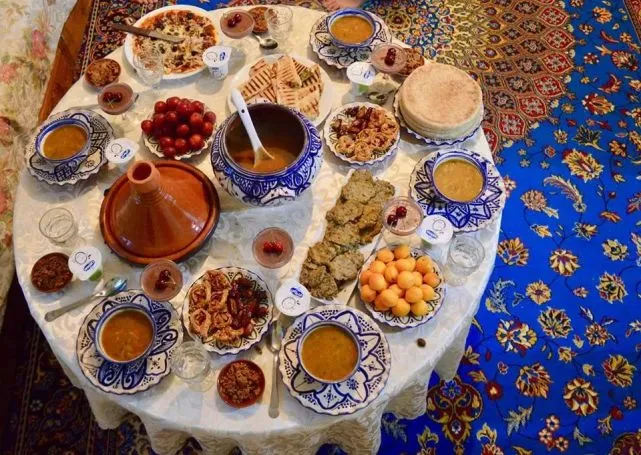
Moroccan cuisine is known for its unique and diverse flavors, which are a result of the country’s rich history, cultural interactions, and geographical location. While there are similarities between Moroccan cuisine and other North African cuisines, such as Algerian and Tunisian, there are also distinct differences in flavors and ingredients.
- Spices: Moroccan cuisine is famous for its abundant use of spices, such as saffron, cumin, coriander, cinnamon, paprika, and turmeric. One of the most well-known Moroccan spice blends is ras el hanout, which can include over 30 different spices. Although spices are used in other North African cuisines, Moroccan cuisine is often considered more heavily spiced and aromatic.
- Sweet and savory combinations: Moroccan dishes often feature a unique balance of sweet and savory flavors. This is exemplified in tagines, slow-cooked stews that can include a mix of meats, fruits, and spices. This sweet-savory balance is less prevalent in other North African cuisines.
- Use of fruits and nuts: Moroccan cuisine frequently incorporates dried and fresh fruits, such as dates, apricots, figs, and raisins, as well as nuts like almonds, walnuts, and pistachios. These ingredients add flavor, texture, and contrast to both savory and sweet dishes.
- Bread: Moroccan meals are typically accompanied by khobz, a round, crusty bread that is used for scooping up food and sauces. While bread is a staple in other North African cuisines as well, the types of bread and their uses may vary.
- Preserved ingredients: Moroccan cuisine often includes preserved lemons and olives, which add a unique, tangy flavor to dishes. Although preserved ingredients are used in other North African cuisines, their prominence and usage in Moroccan cuisine make it distinct.
- Couscous: While couscous is common across North Africa, the preparation and accompaniments can vary. Moroccan couscous is traditionally steamed and served with vegetables, meats, or both, often featuring a rich broth or sauce.
- Harissa: This spicy chili paste is more prominent in Tunisian and Algerian cuisine than in Moroccan cuisine. Moroccans use their own chili paste called “Taktouka” or “Matbucha,” which is generally milder and has a different flavor profile.
These differences in flavors and ingredients give Moroccan cuisine its unique character, setting it apart from other North African cuisines. However, it is essential to note that there is significant regional variation within each country, and the lines between cuisines may blur in some instances.